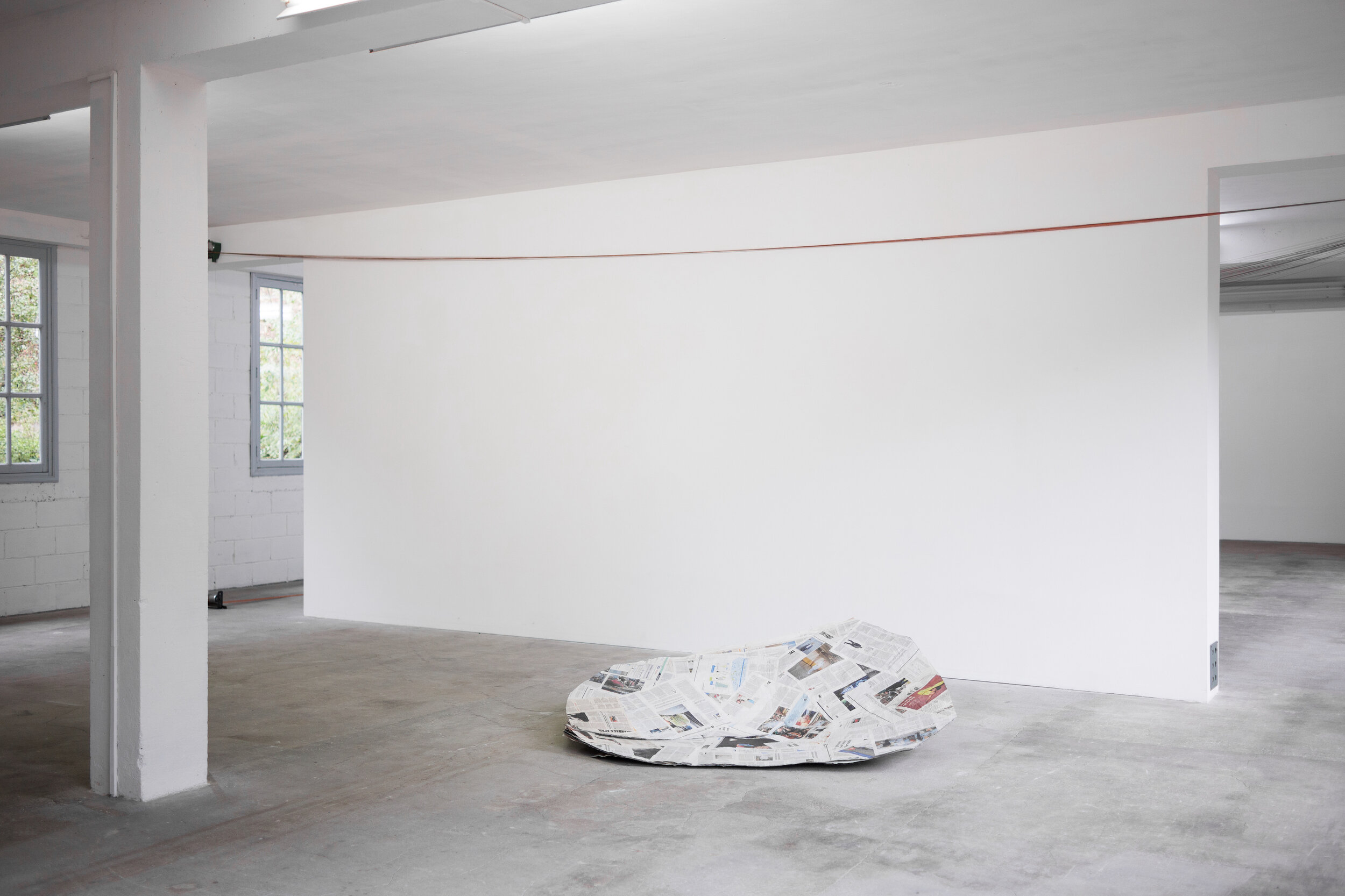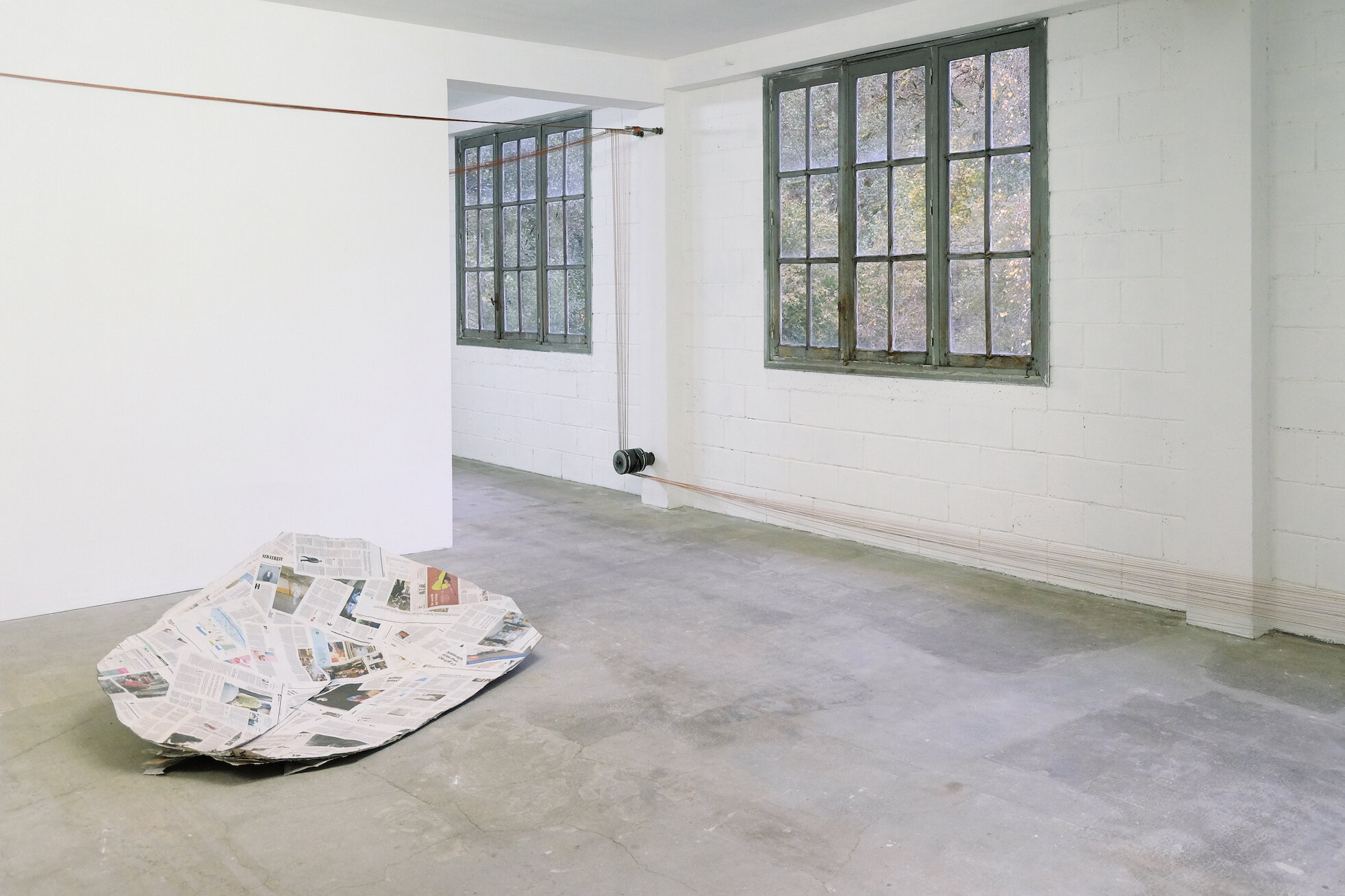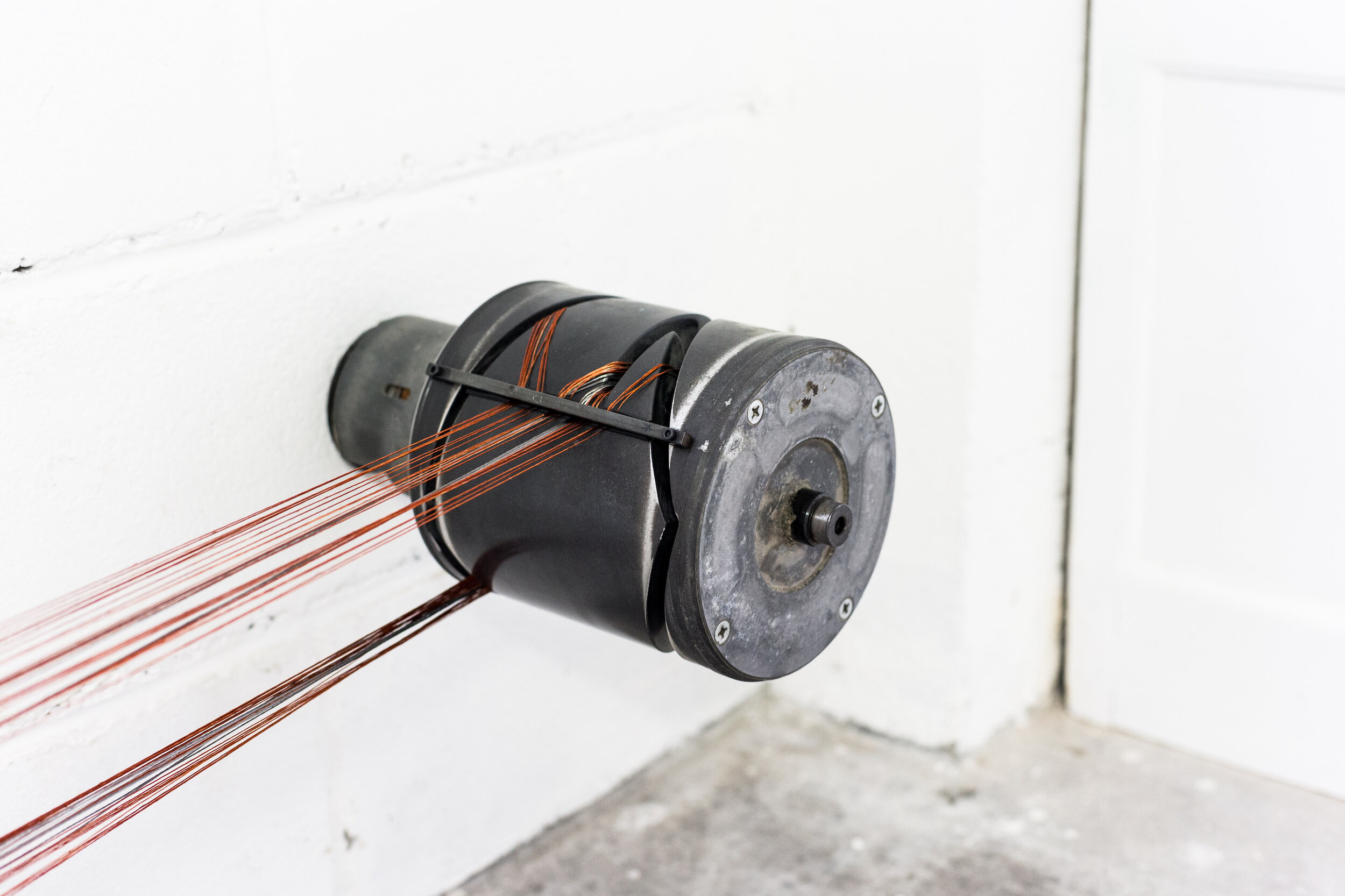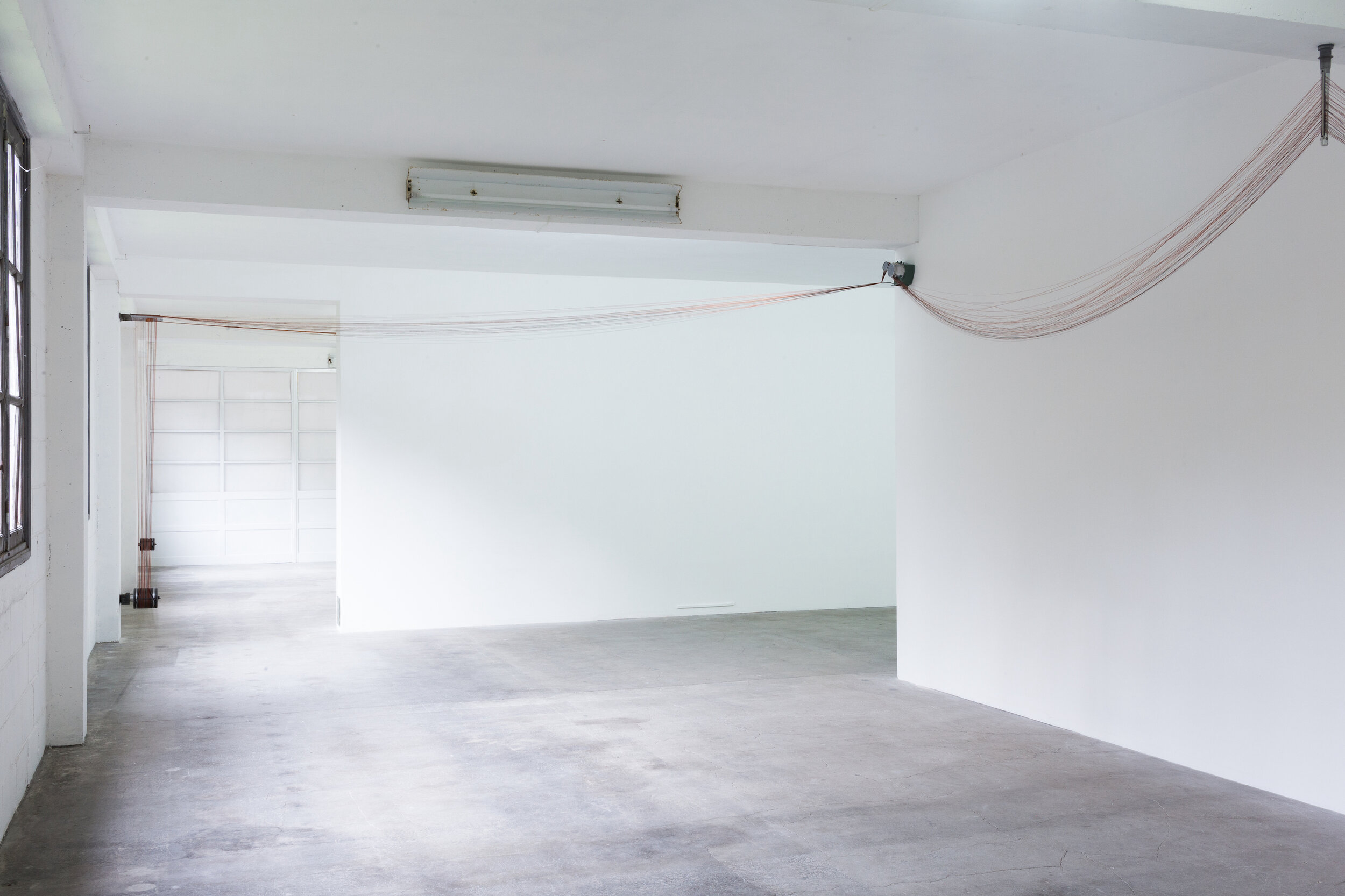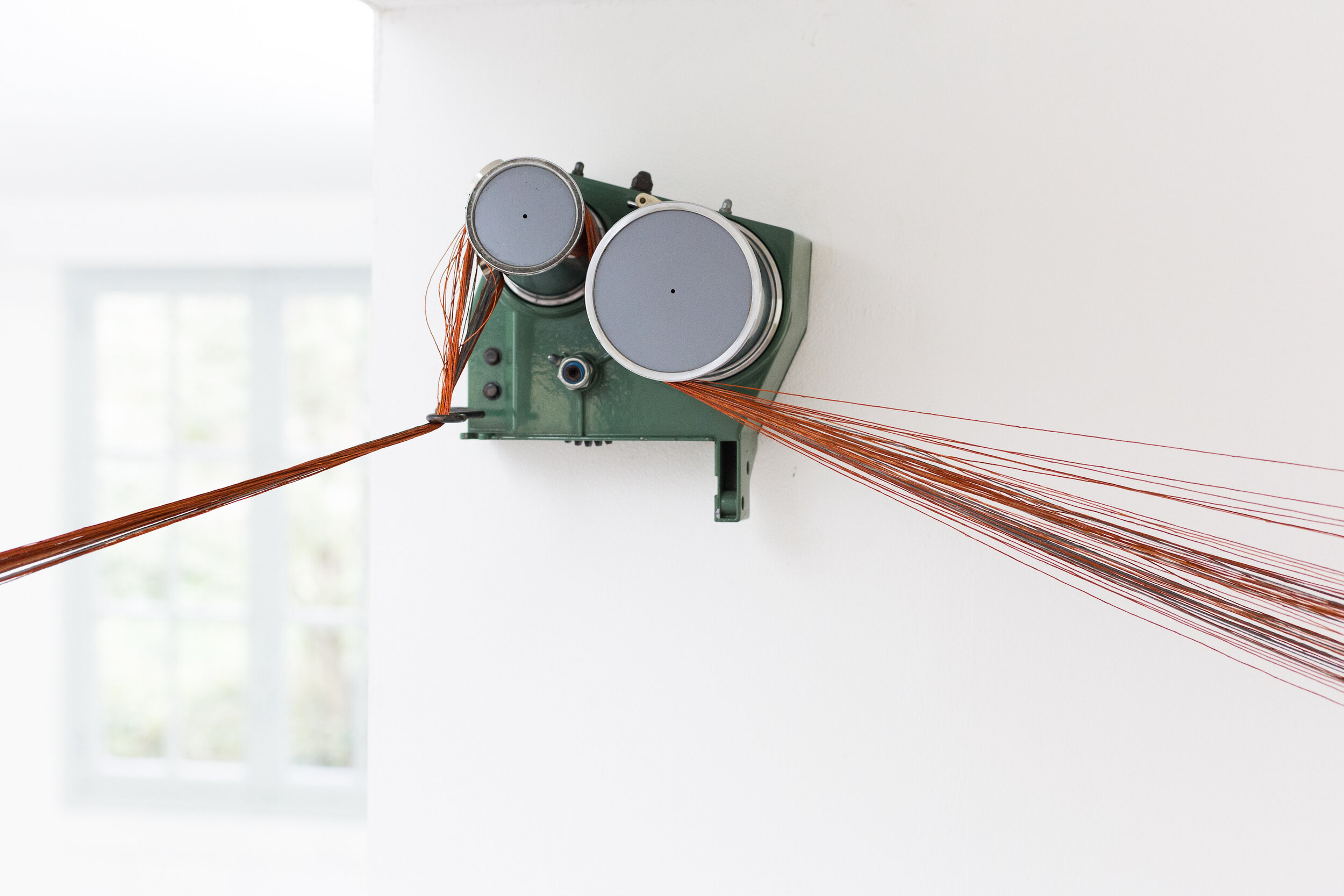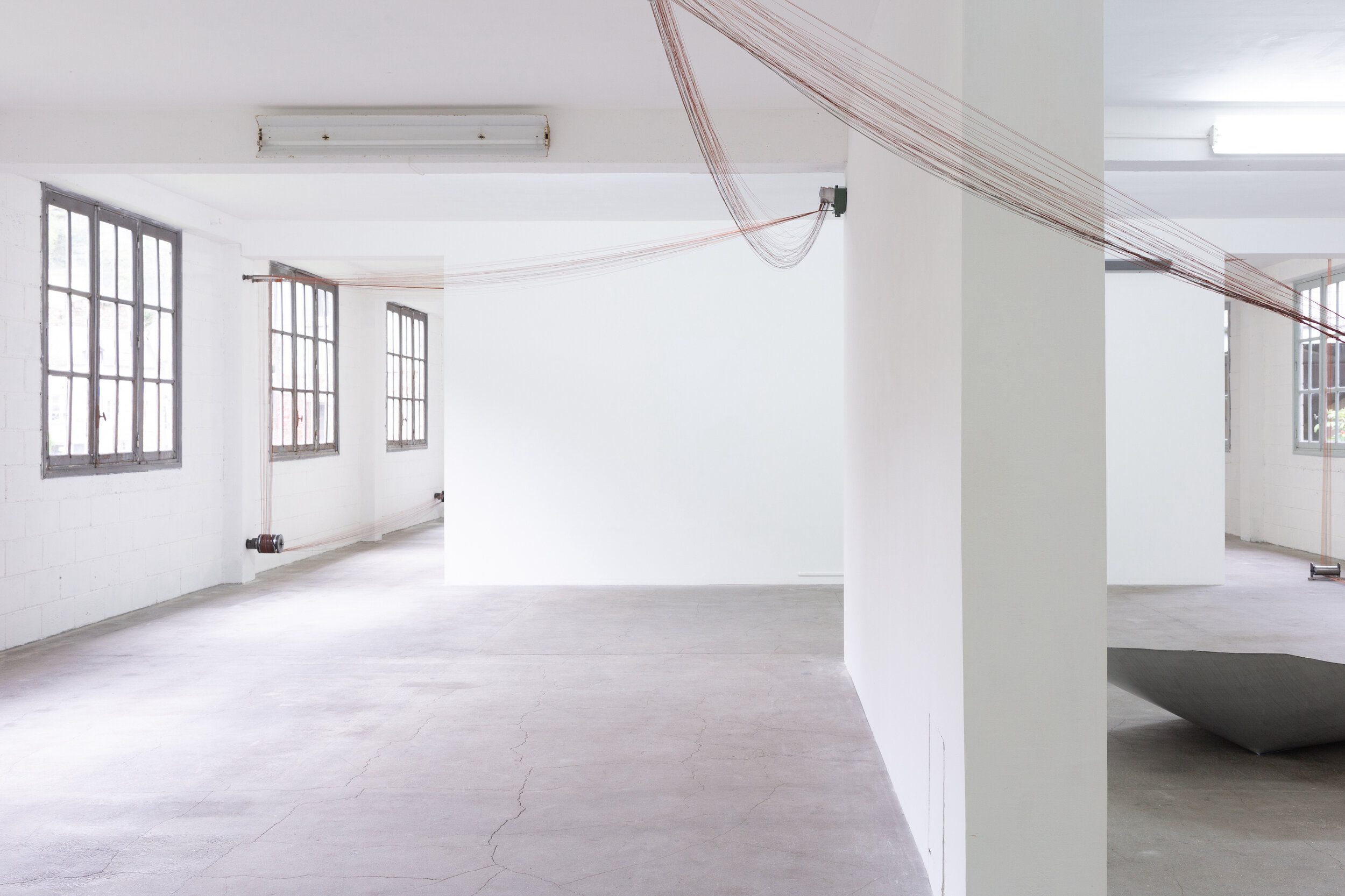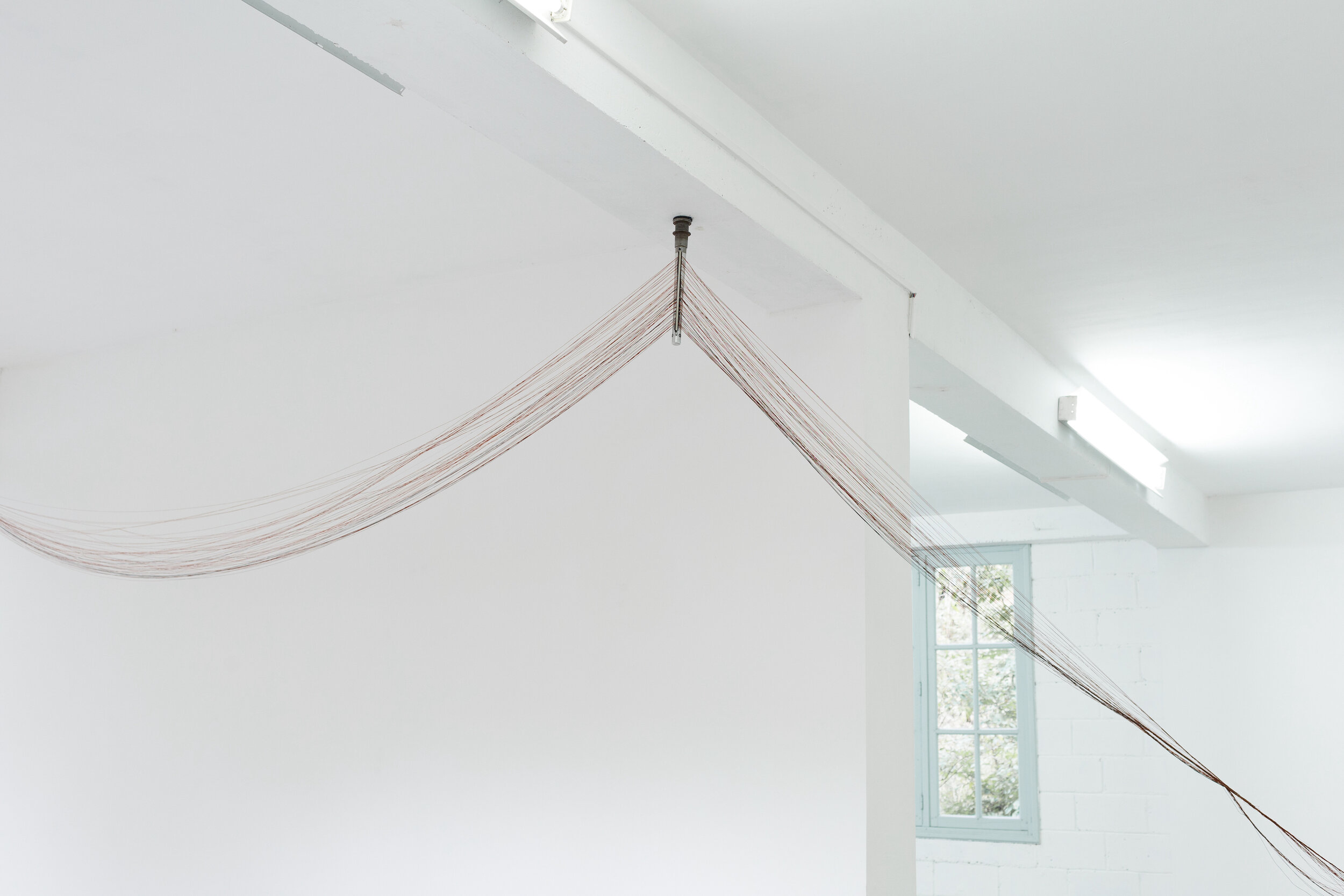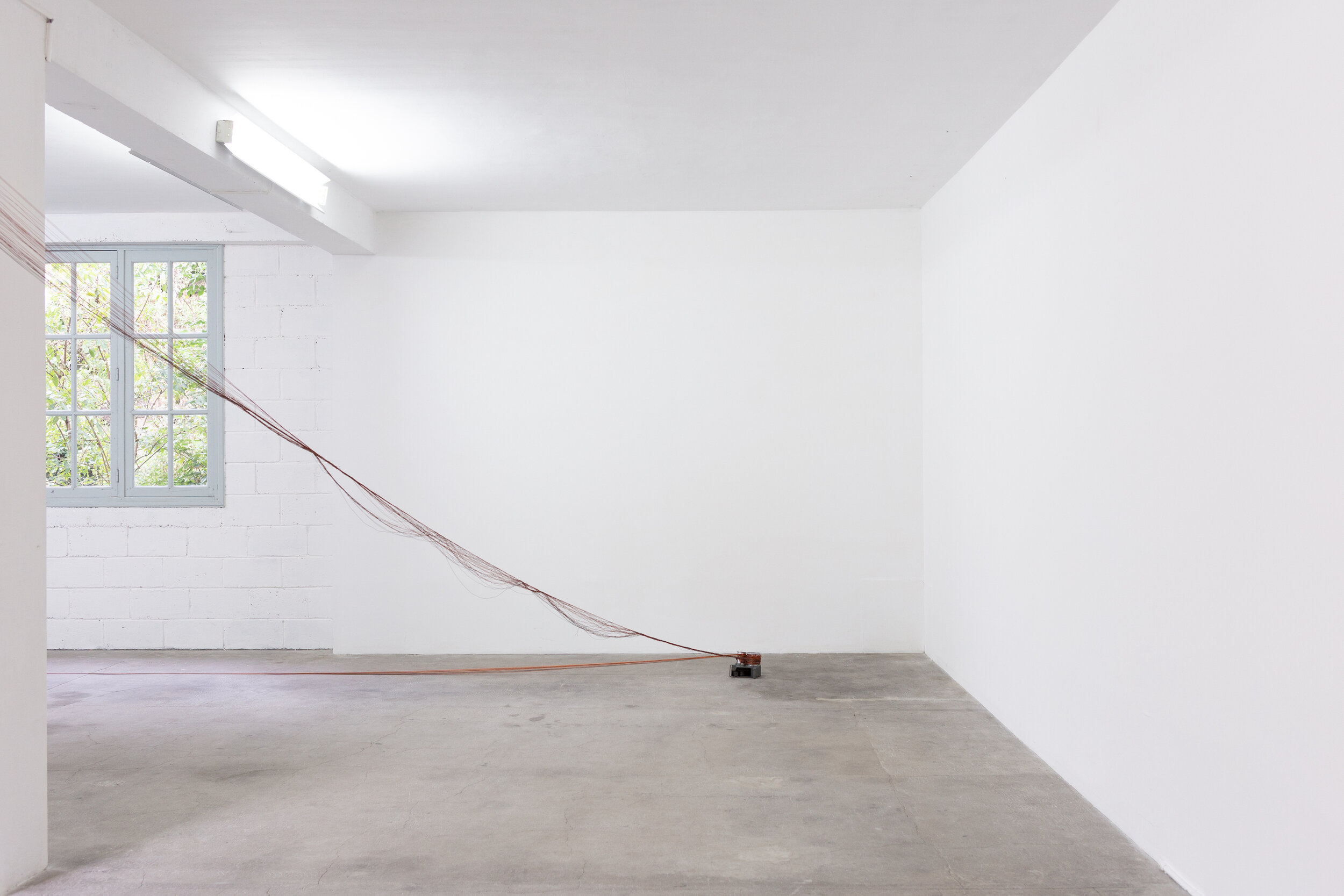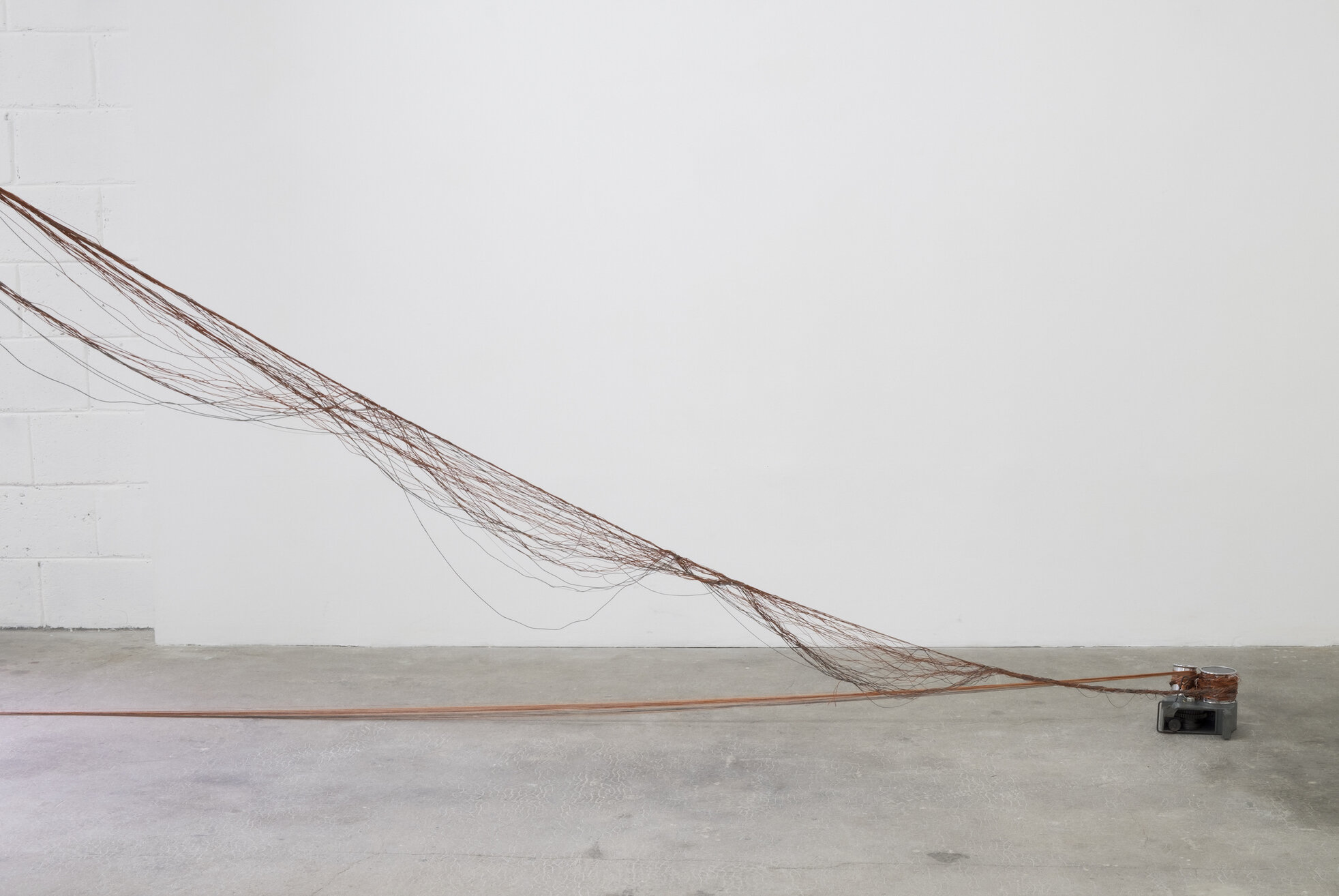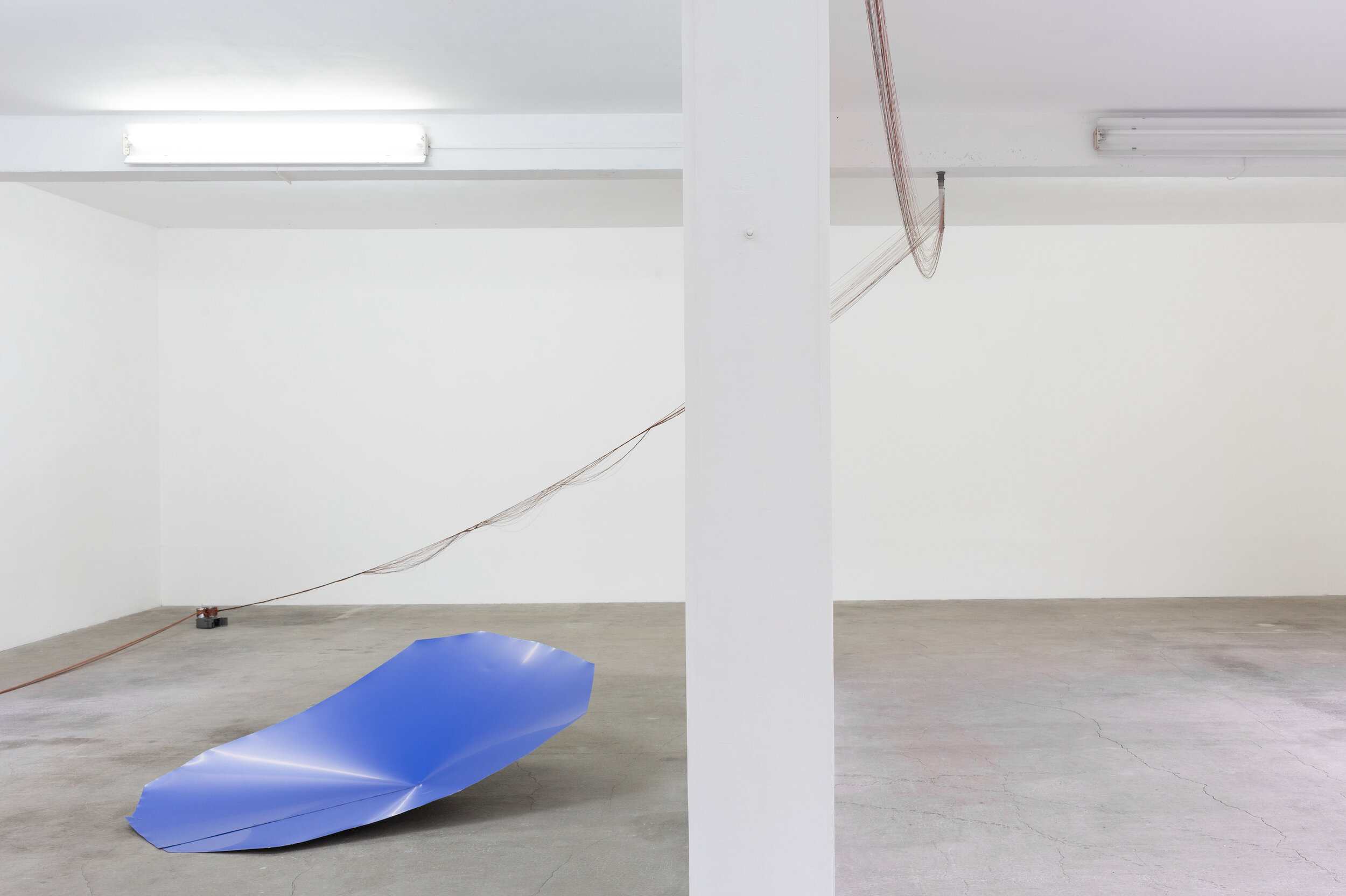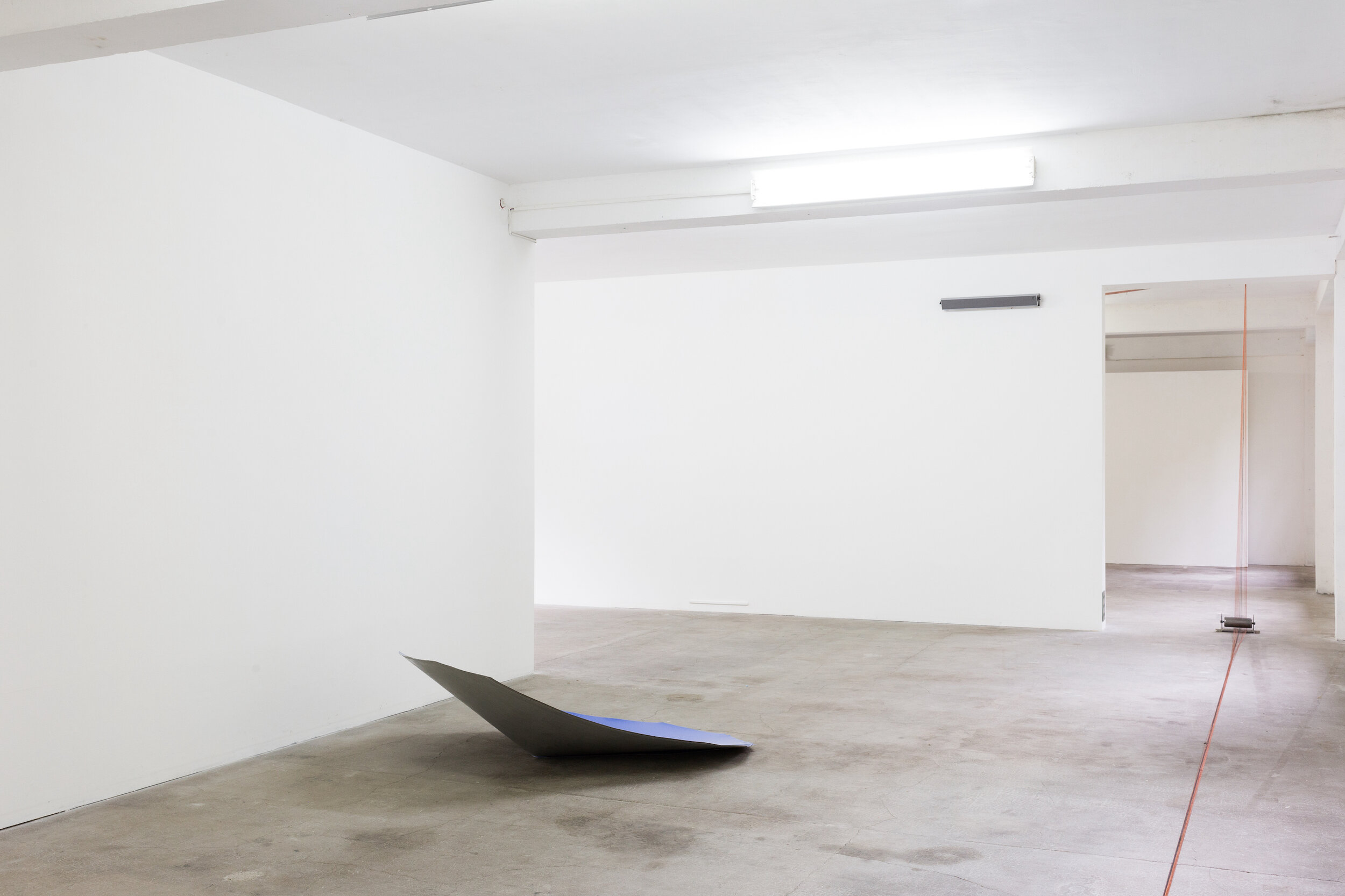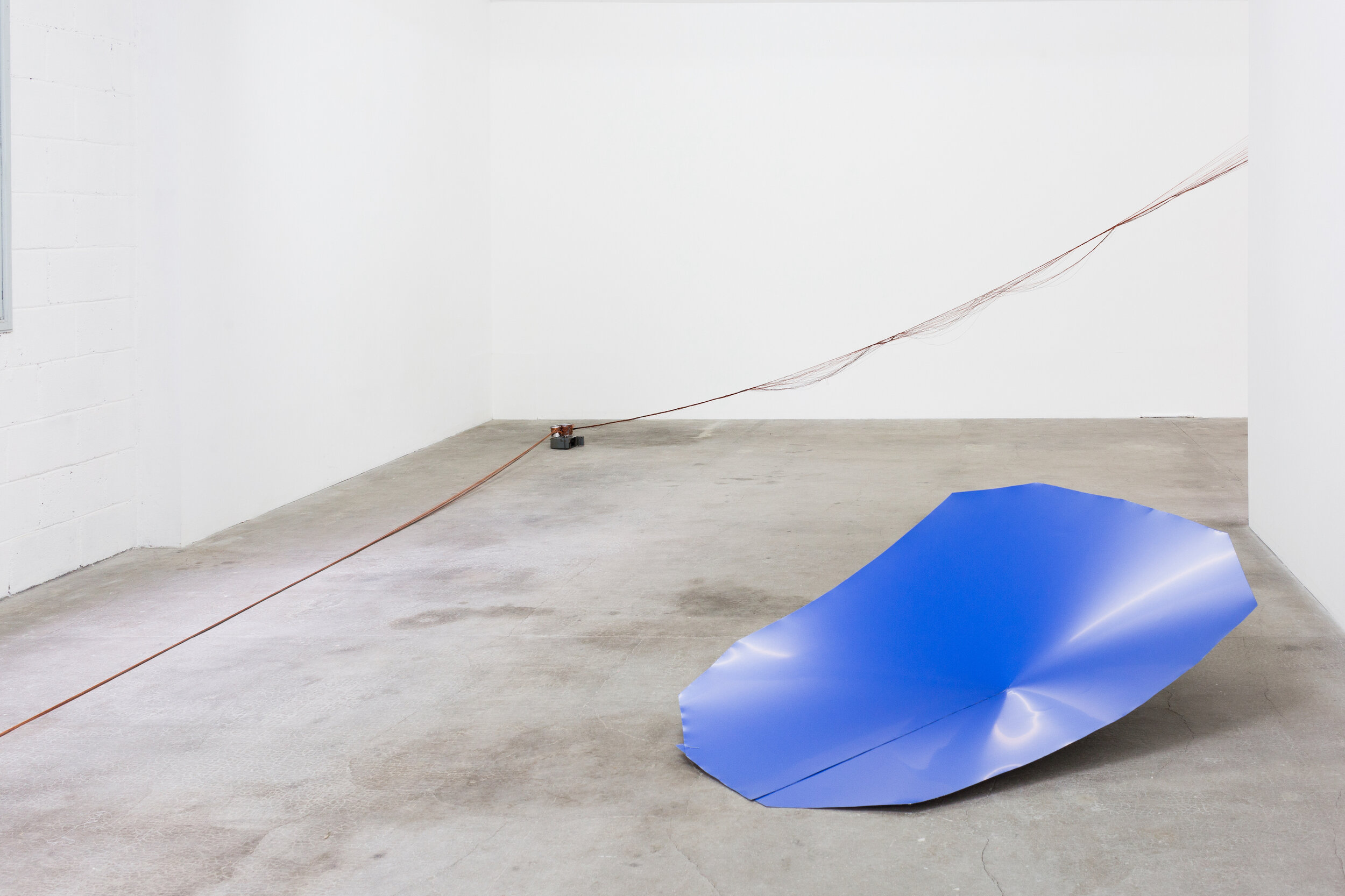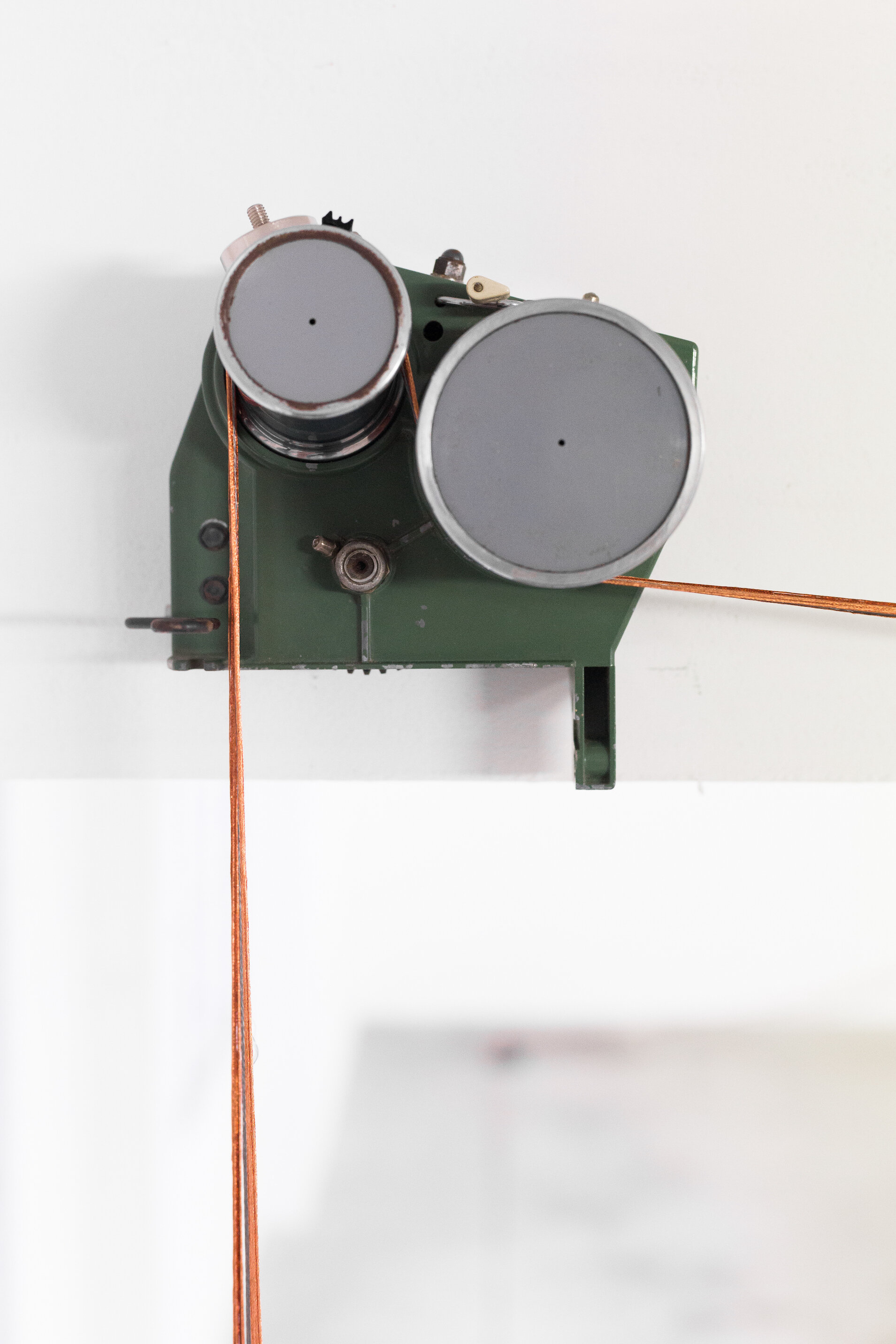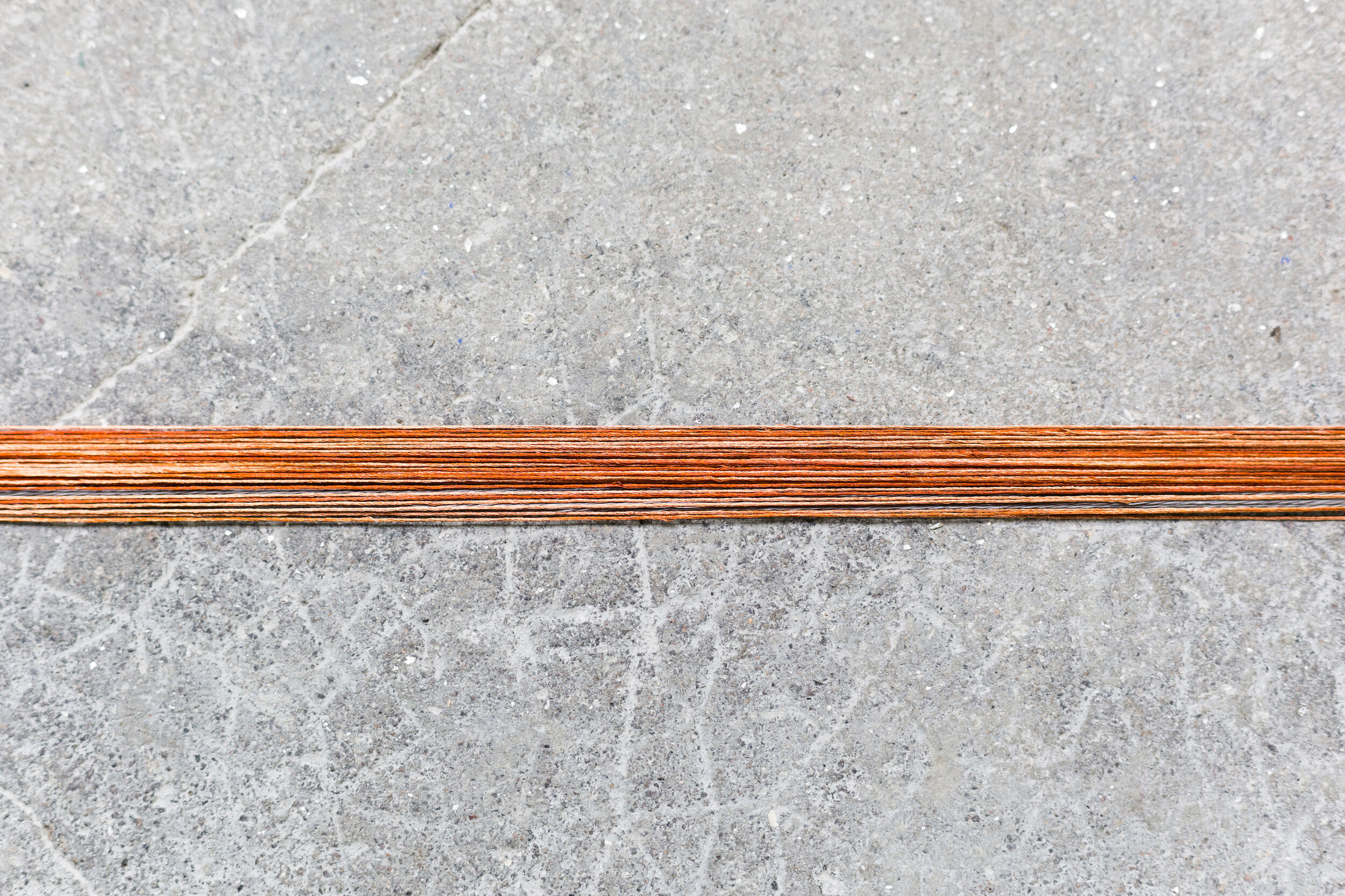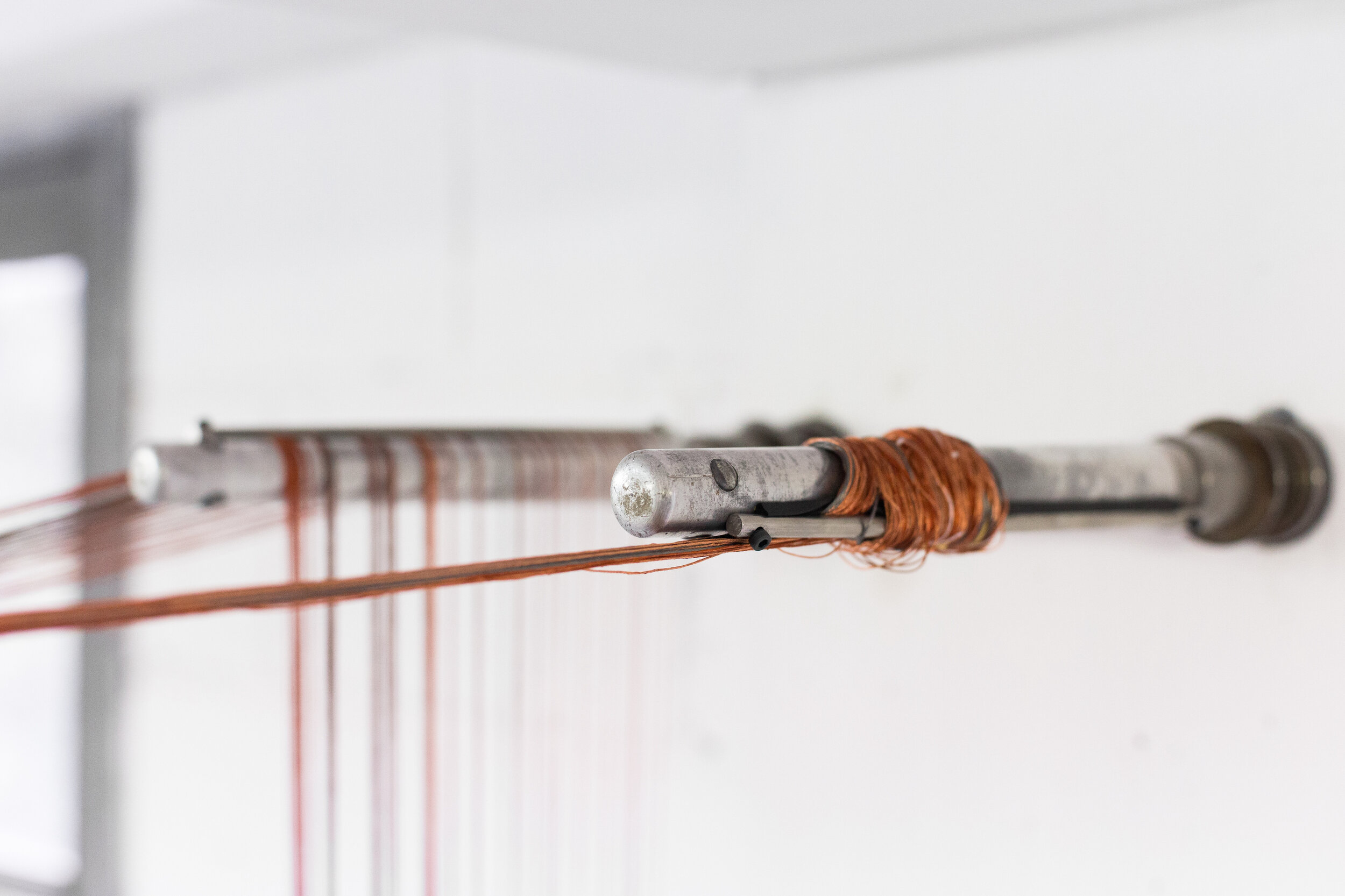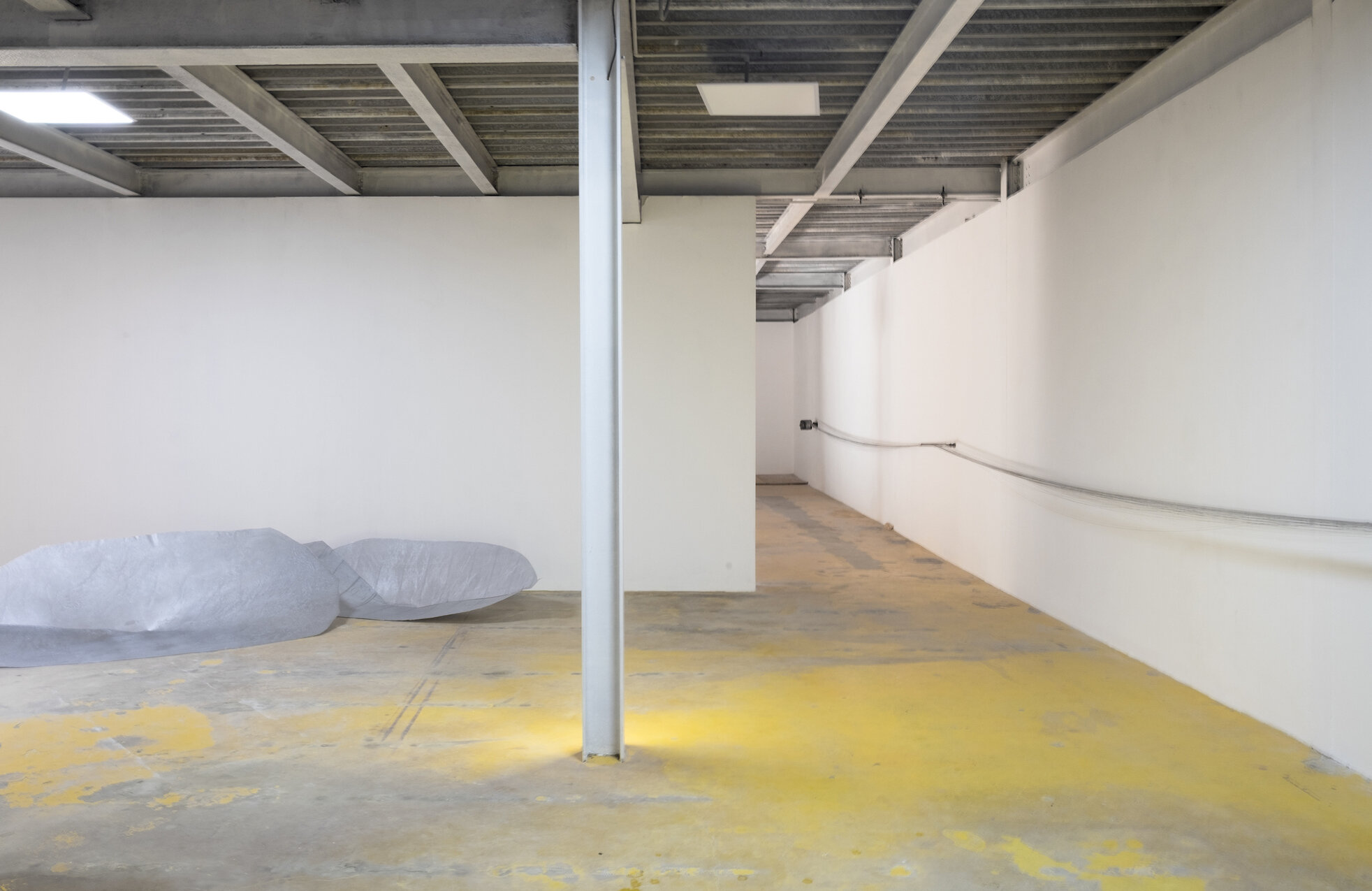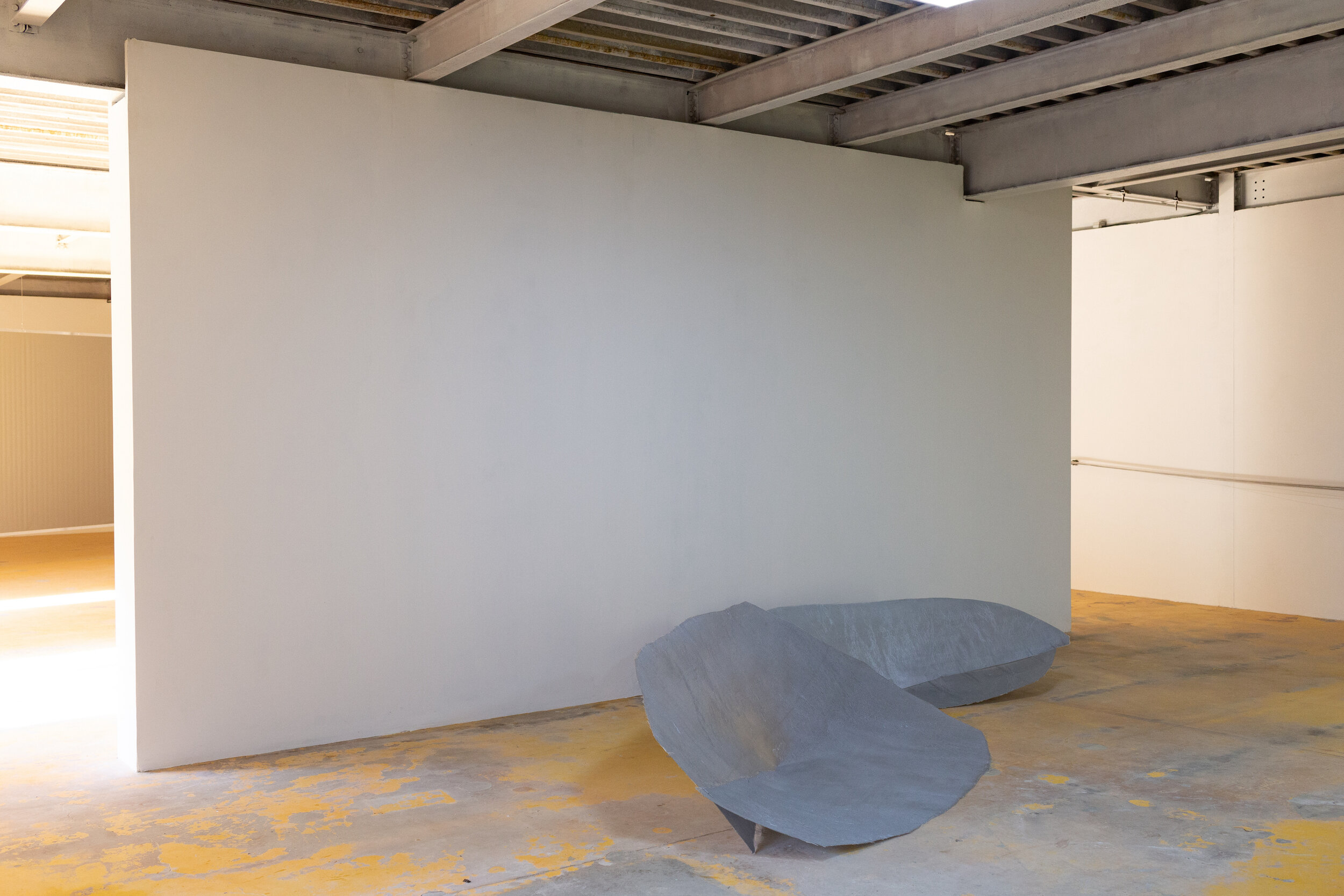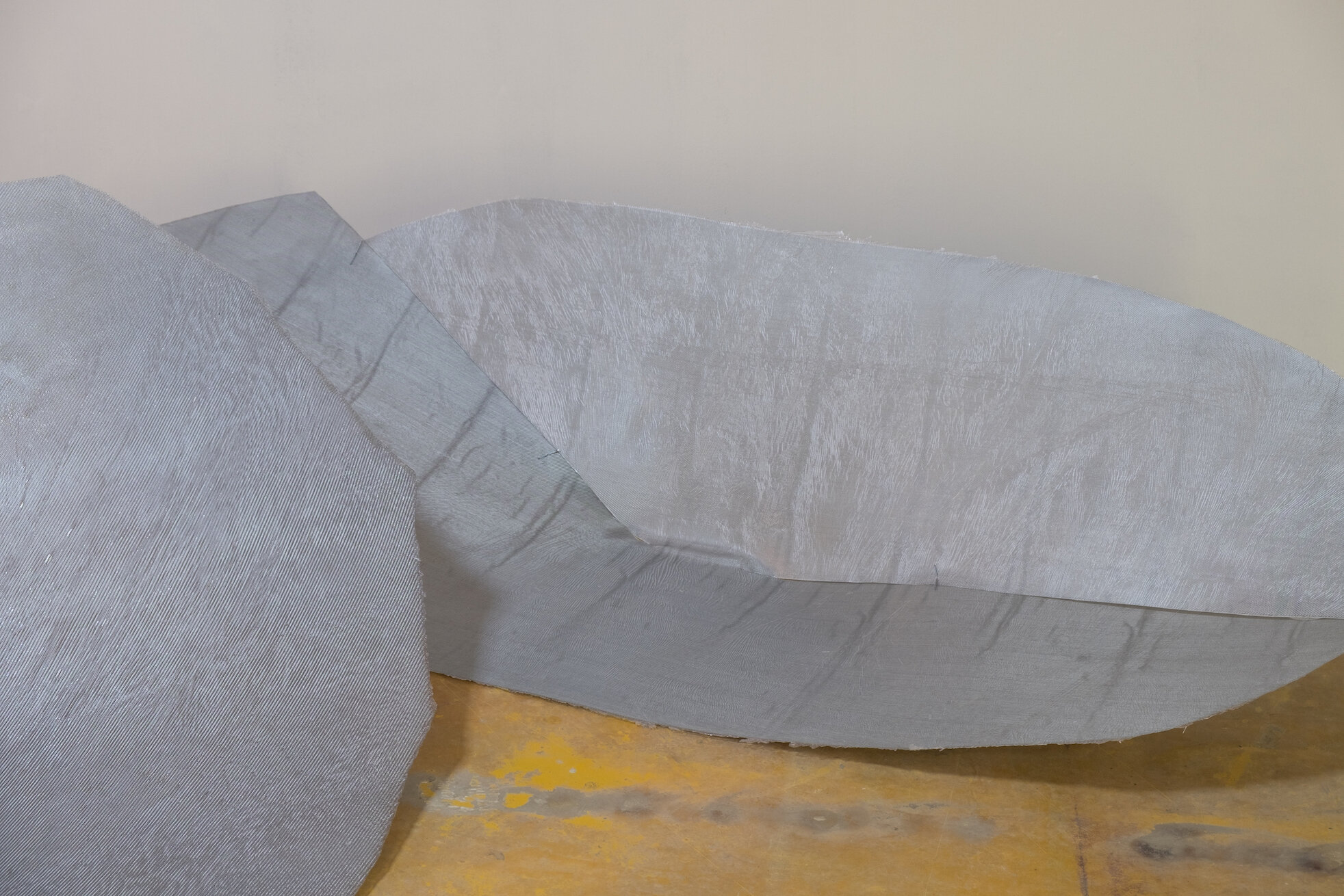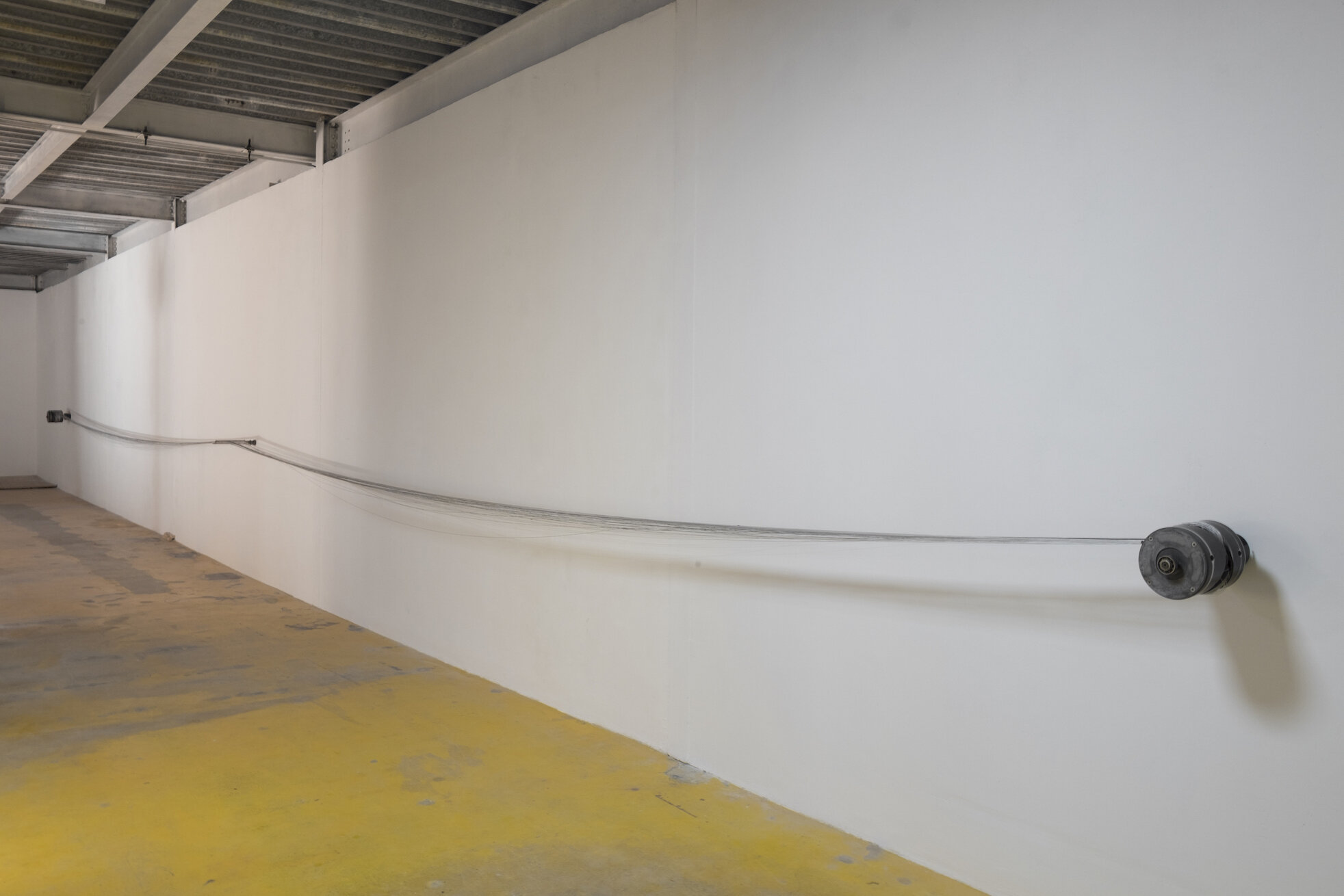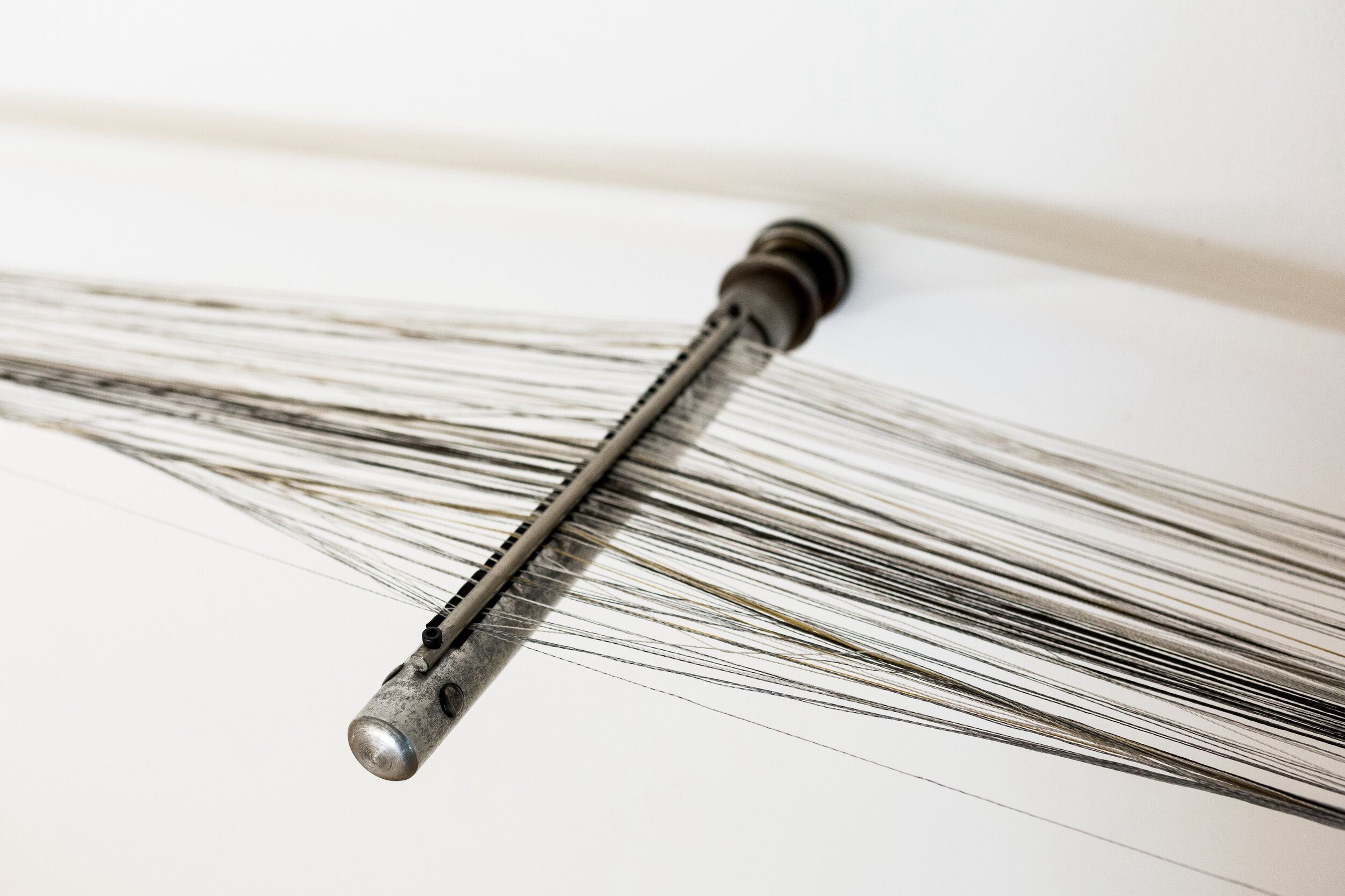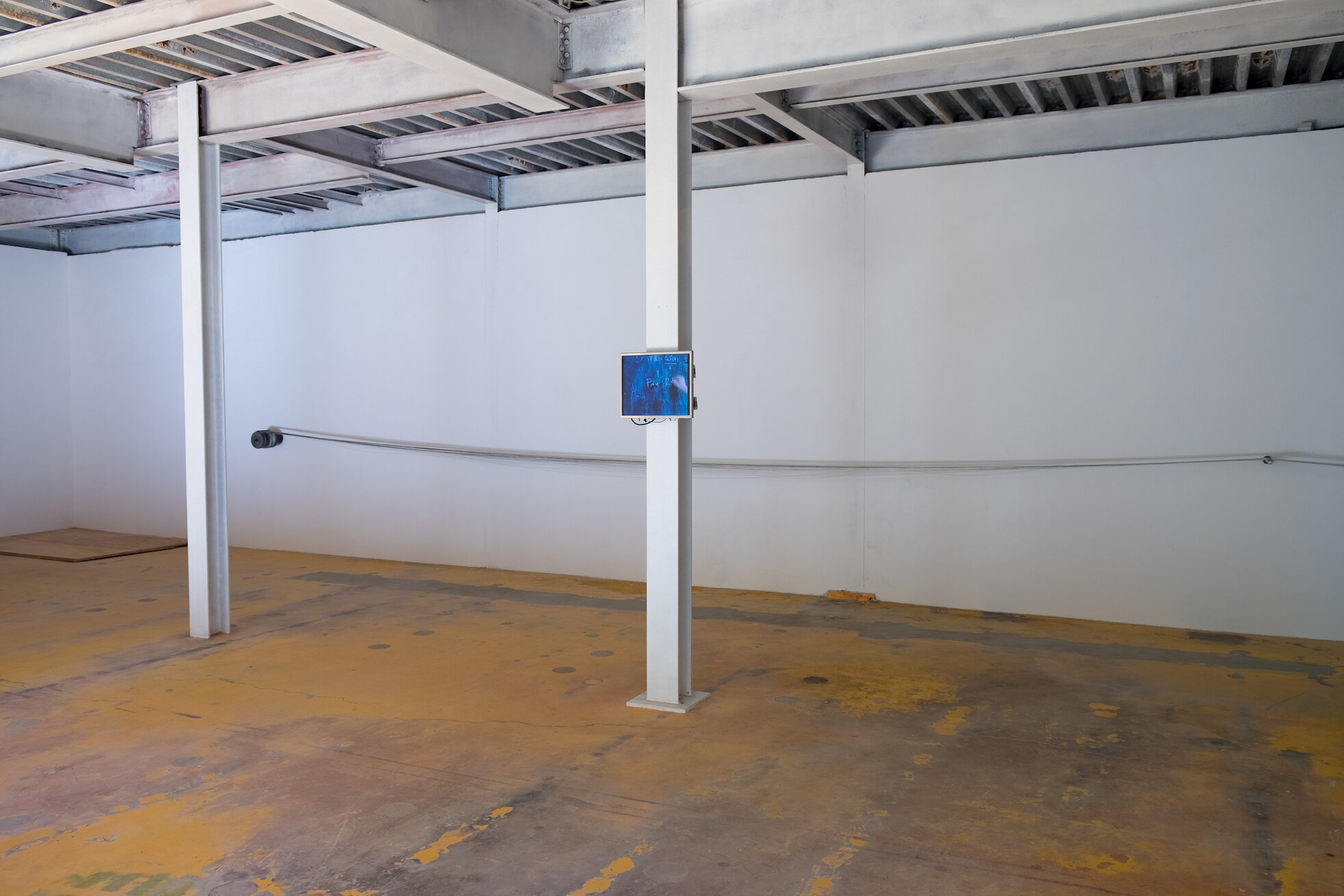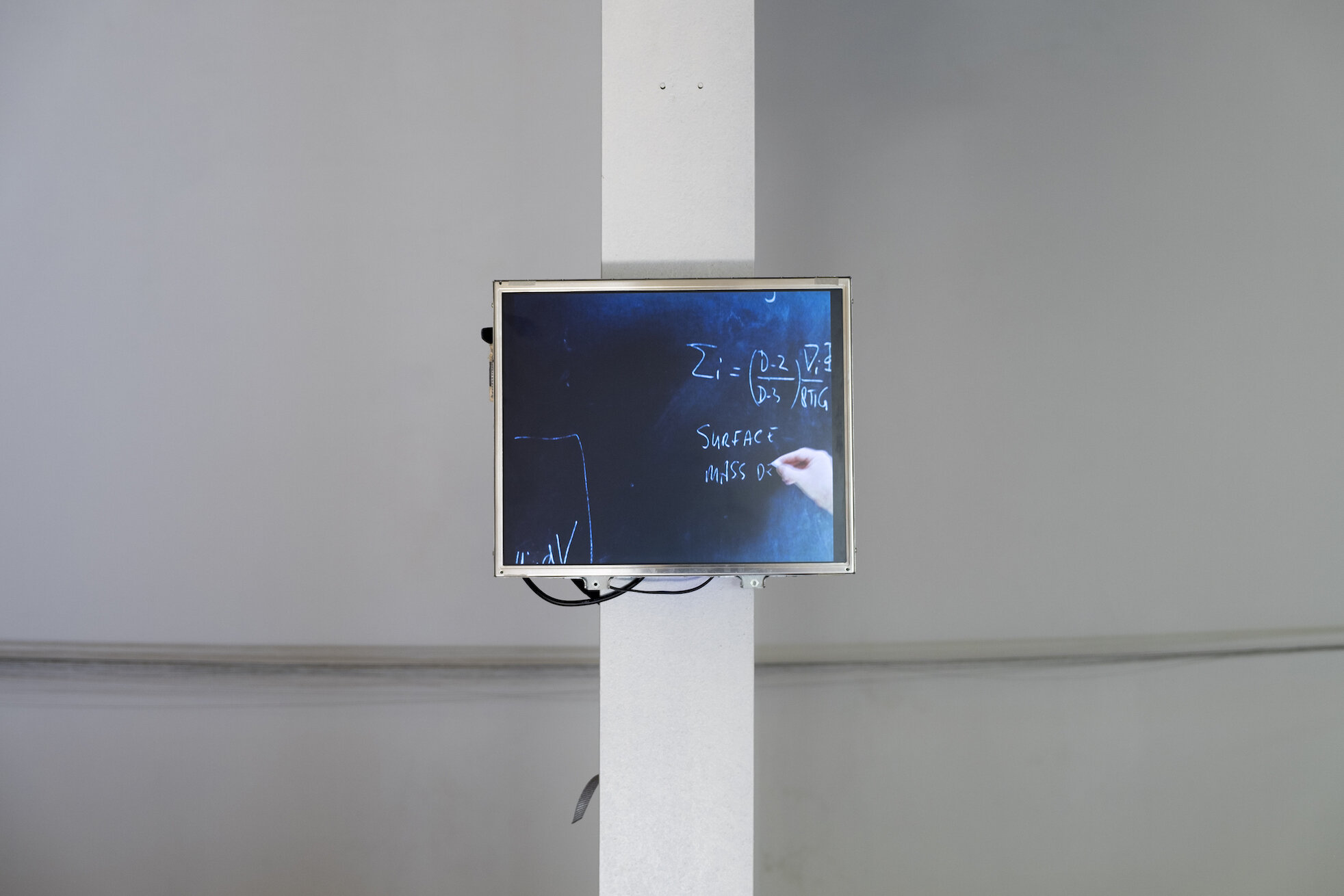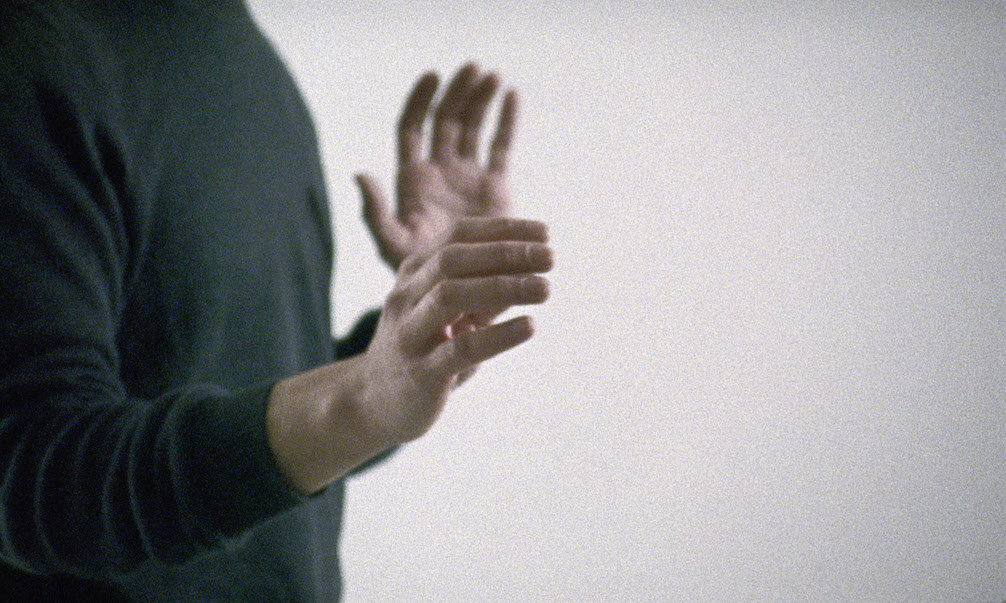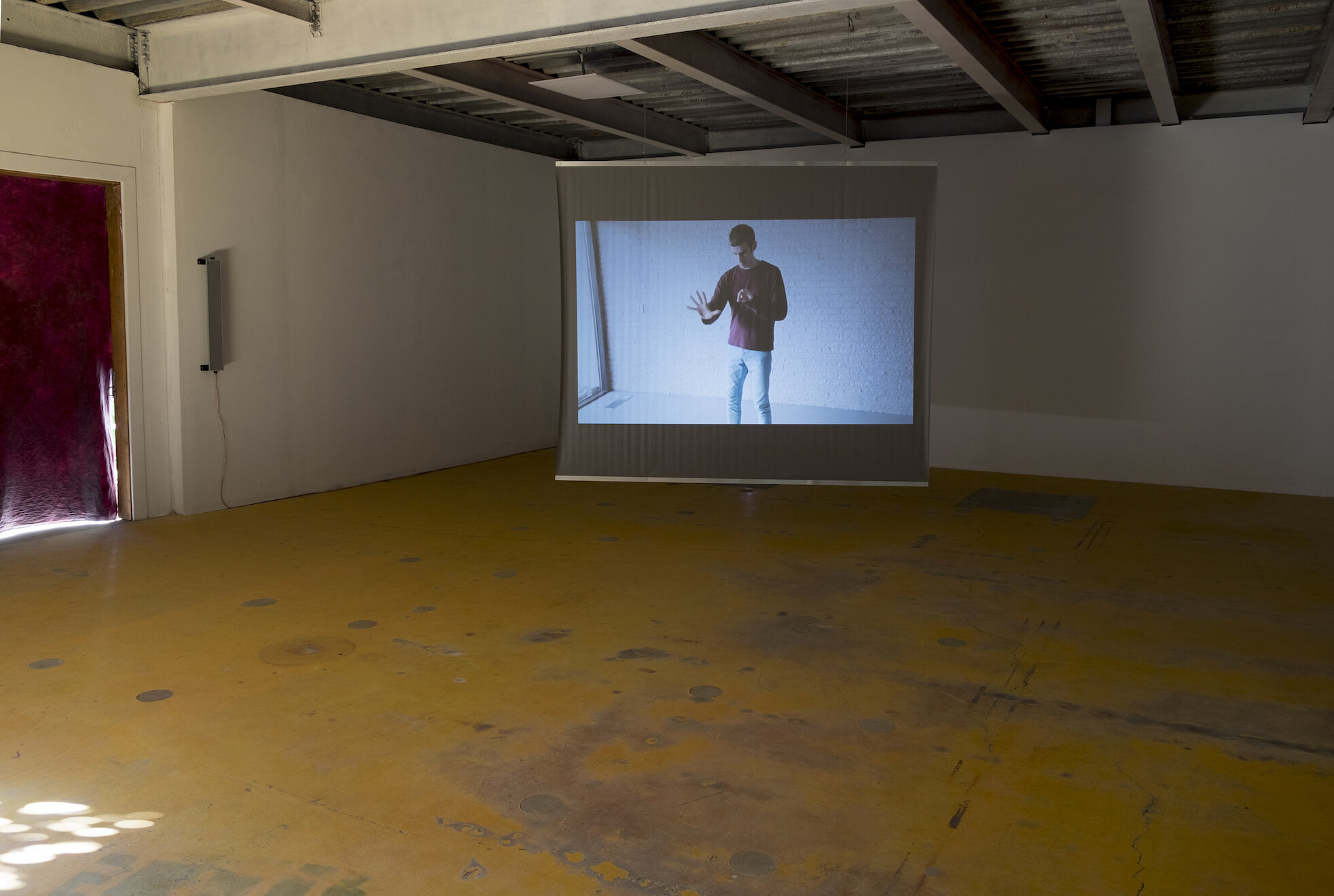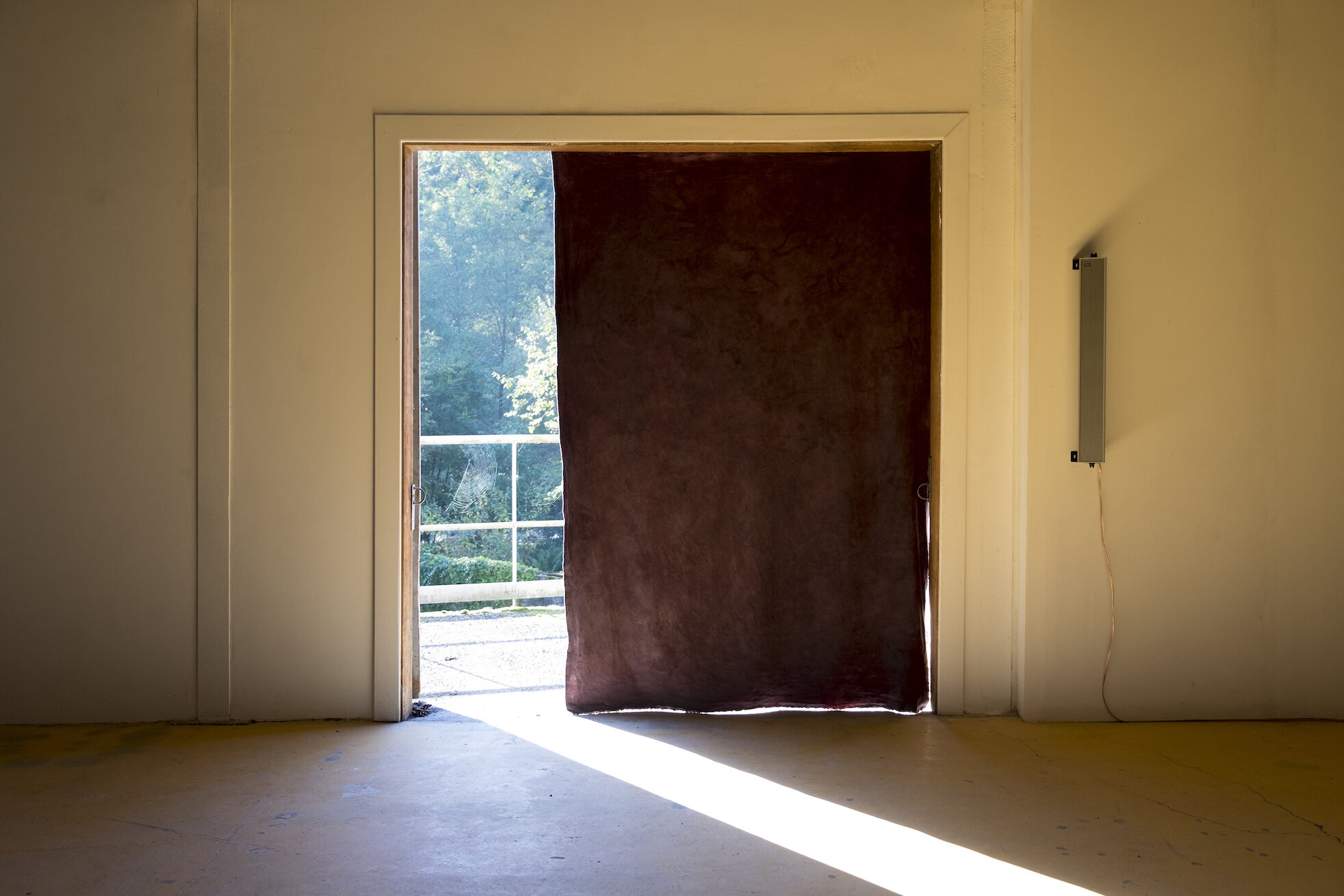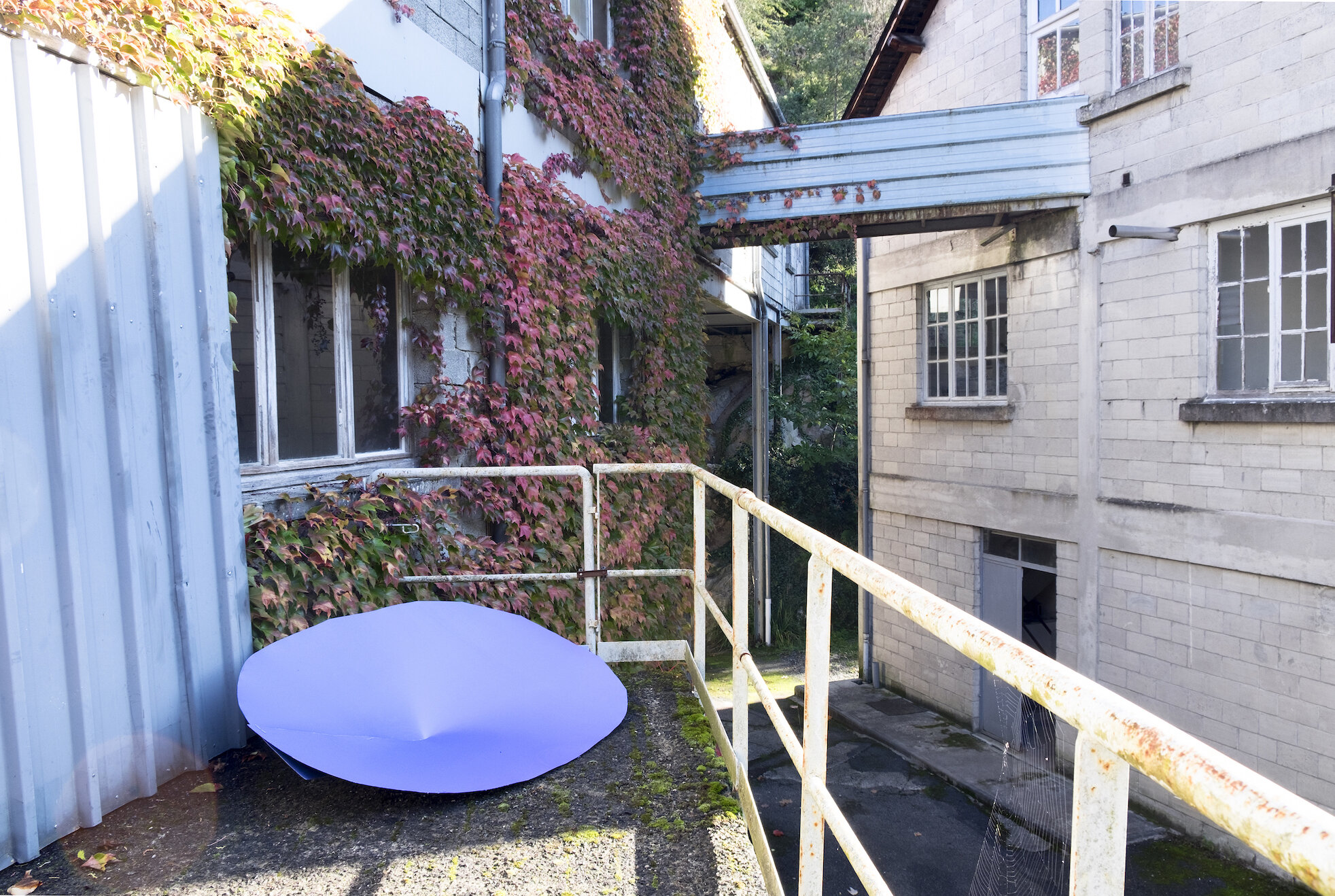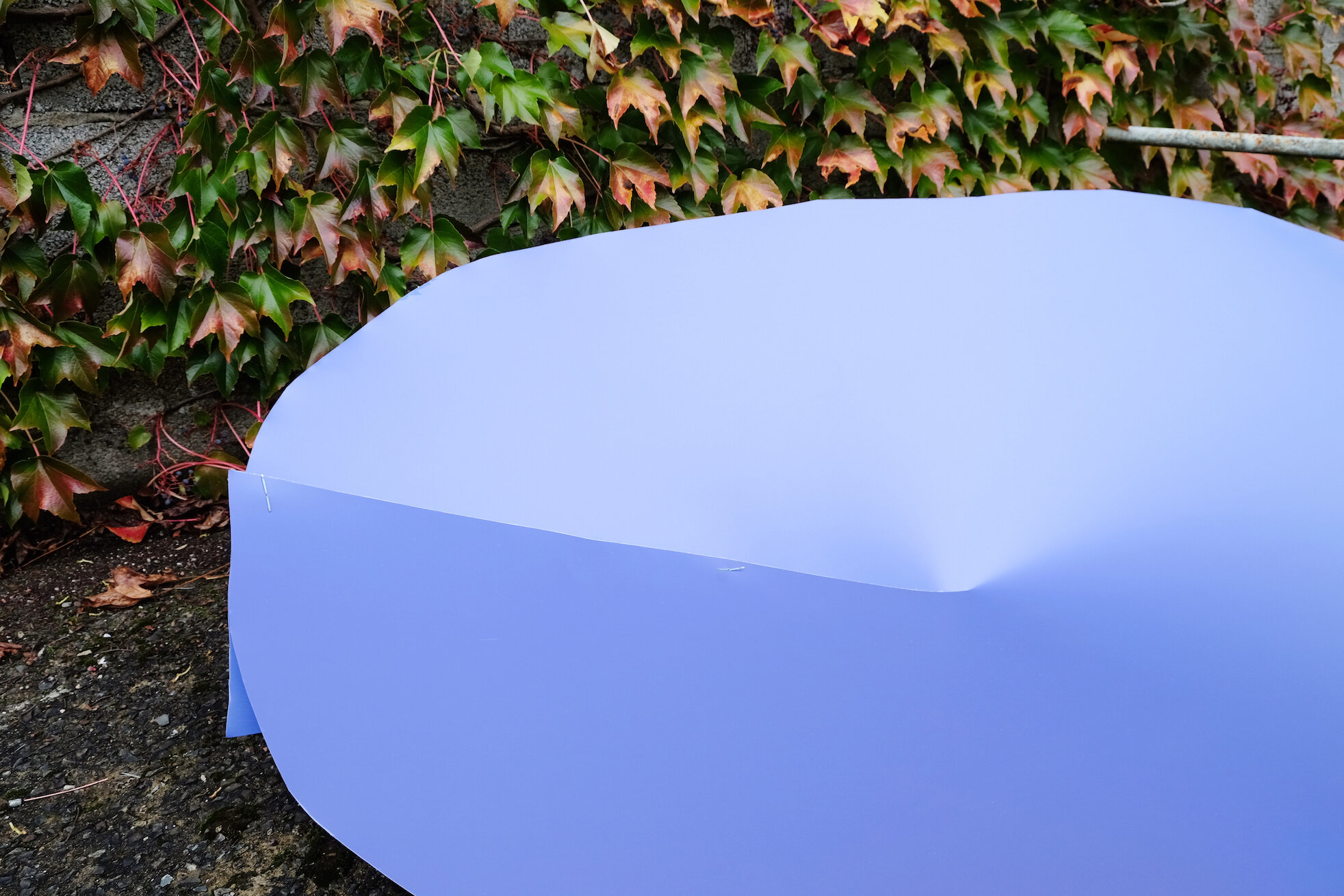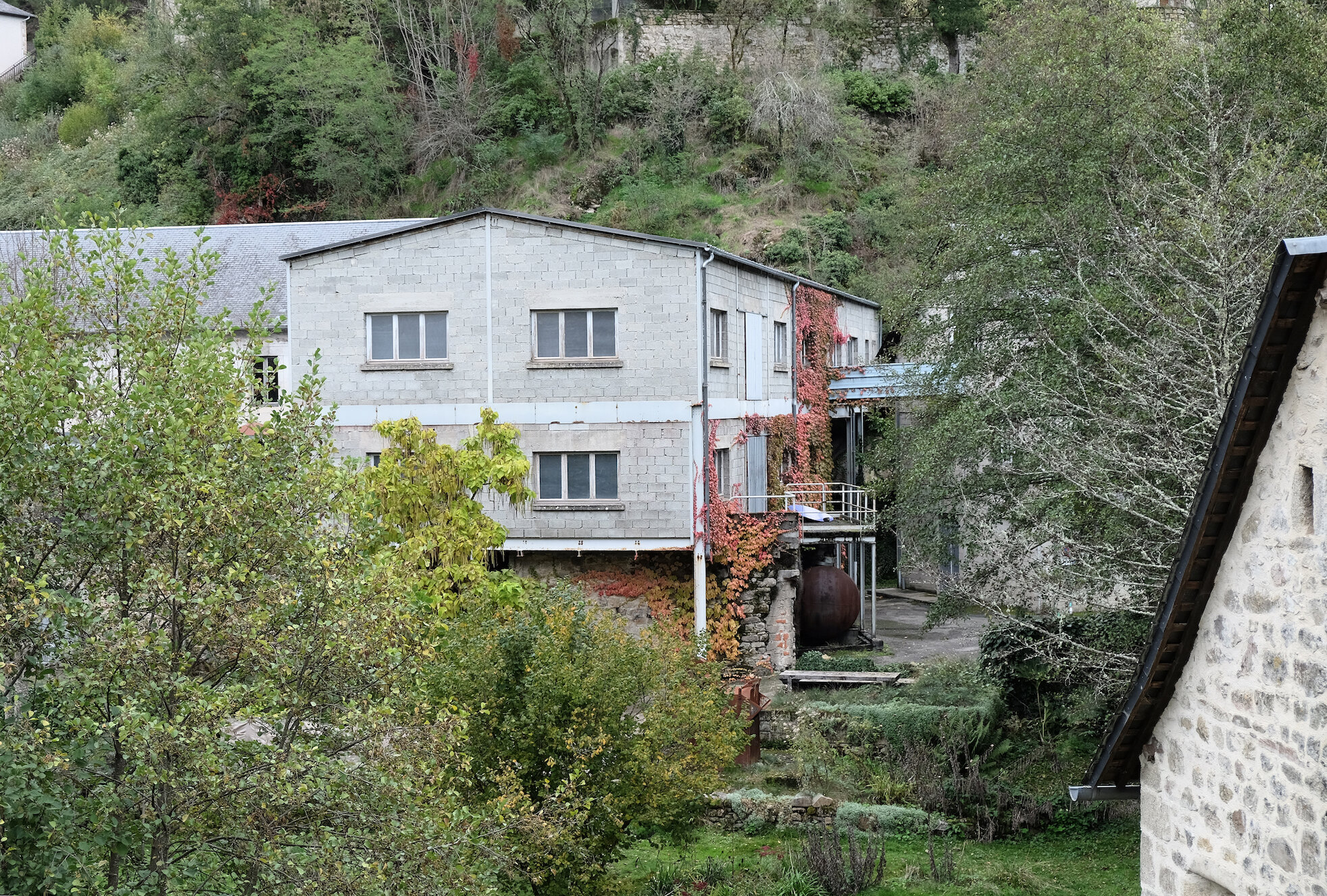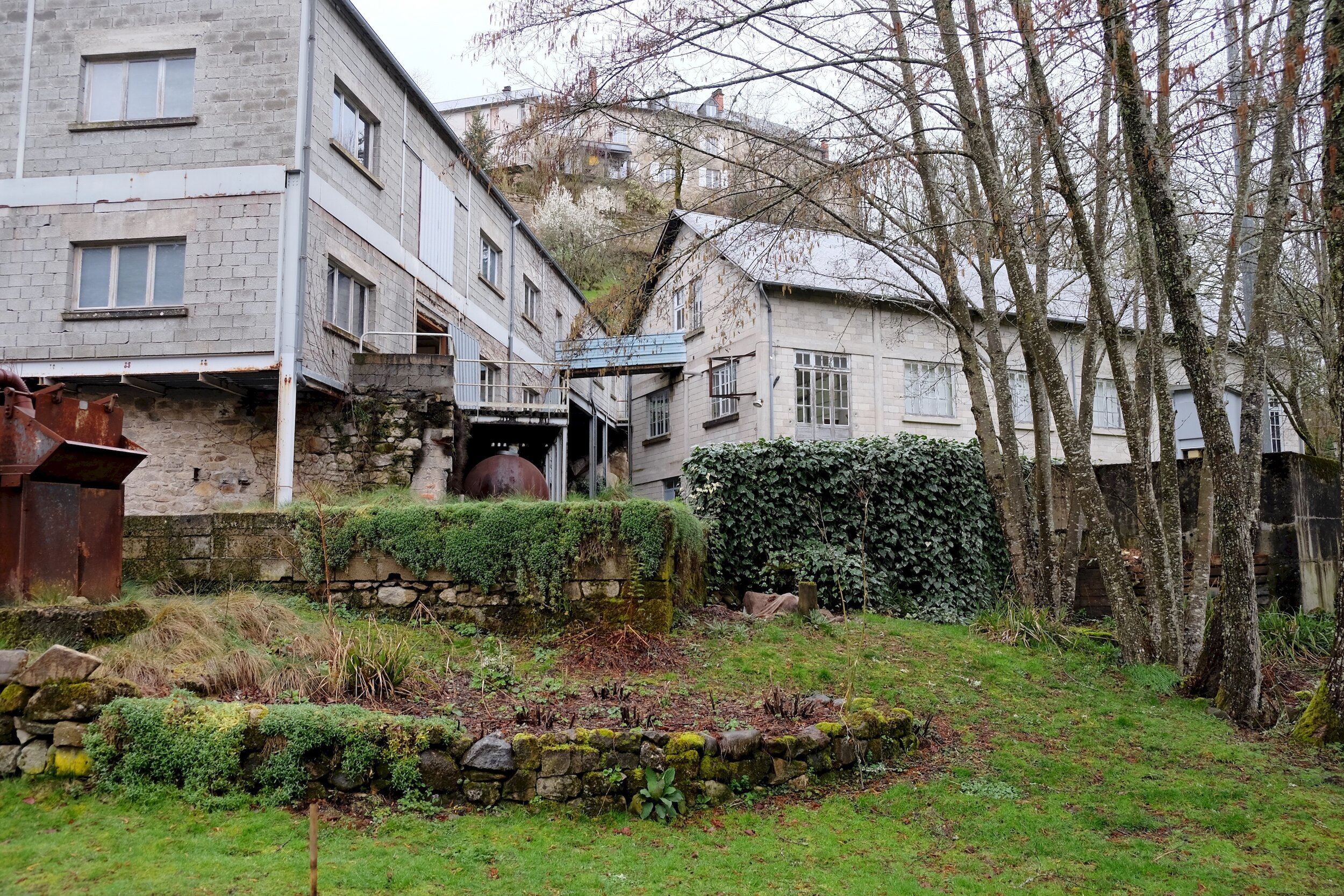This Dust Song
Gwenneth Boelens
Curated by Eloise Sweetman
October 17 - November 22, 2020
@
Treignac Projet,
Treignac, France
This Dusk Song is sunset and mist.
This Dusk Song is auditory and lived.
This Dusk Song is river rushing and hiss.
Located in an old yarn factory in the French countryside, This Dusk Song is an exhibition of architectural, material and elemental intimacy found in the work of Dutch artist Gwenneth Boelens. Together Boelens and curator Eloise Sweetman gently bring that intimacy to the audience of Treignac Projet and its surrounds.
The location and the industrial history complement and elevate Boelens’s investigation into forgotten weaving techniques and the use of striking fibres such as electro-conductive and reflective threads in her works. In particular, with an intricate site-specific installation, Boelens attunes to Treignac Projet’s multiple exhibition sites by threading basalt, copper, and steel fibres over rollers, spindles, and pulleys reclaimed from textile machinery from the factory’s heyday. The installation stretches across beams, runs down the wall, and journeys across the floor. It is a song and a growing corpus that cannot be grasped in its totality.
Boelens’s new installation is set in dialogue with The very thing we don’t know is always trying to expand (2016), a two-channel film work based on interviews with Erik Verlinde, theoretical physicist, about his yet -to-be released theory. Boelens has been intrigued by Verlinde’s process of finding new ways to think about ever-challenging topics like gravity, and the 95 per cent of undefined ‘matter’ in the universe, and how these topics resist visibility.
Installed throughout Treignac Projet are Shields, Shells, Shh, made onsite, specifically for this exhibition, using recycled sheets of steel as well as acrylic, paper, and offset printing plates. Appearing as satellites fallen to the ground, the work transforms into a shield and a shell. Left to the elements, the light-sensitive pieces will slowly become markers of time as they are bleached by the autumn sun.
Both locations are filled by atmospheric audio works, the first created by strumming the loom from which Gwenneth has woven her textiles and the second by a theremin fed into a modular synthesizer. The exhibition soundtrack to This Dusk Song is accompanied by the sound of the rushing river that runs below the exhibition.
This Dusk Song is made possible by Stichting Stokroos Foundation, Stichting Niemeijer Foundation and Embassy of the Kingdom of the Netherlands, Paris.
Click to read an essay by Eloise Sweetman
Gwenneth Boelens is concerned with processes of perception, memory, and time; throughout her work, she aims to fix the traces of physical movement in space. Her work has been exhibited at Kunst-Werke, Berlin; Ludwig Forum, Aachen, Germany; Museum Boijmans Van Beuningen, Rotterdam; ACCA, Melbourne, and others. She attended the Koninklijke Academie voor Beeldende Kunsten, Den Haag, The Netherlands, and the Rijksakademie, Amsterdam. In 2011, Gwenneth was nominated for the Prix de Rome. Boelens lives and works in Amsterdam.
A common thread in Eloise Sweetman practice is to deliberately engage in hospitality and reconcile the responsibility of putting exhibitions, texts, talks, events into the world. As such, her practice intertwines the group exhibition format with a strong emphasis on event-based programming and working within diverse organisational contexts from the museum to glasshouse, from the observatory to artist-run space. Eloise Sweetman is co-founder and co-director of Shimmer, an exhibition, events and online platform in the Port of Rotterdam.
Treignac Projet is an orbit of informal, temporary groups whose institutional materials are available through a matrix of sharing, hosting & careful commitment. Situated in the Limousin region of France, established in 2007 by Sam Basu and Liz Murray.

